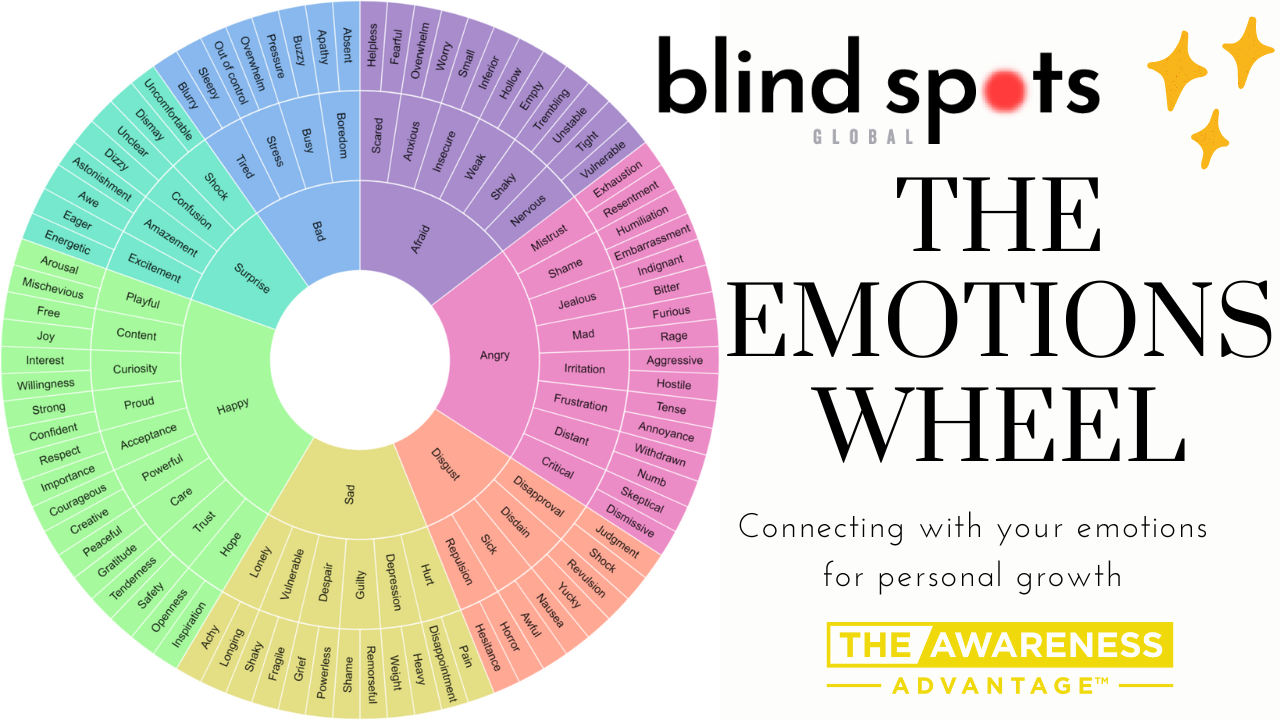
The Emotions Wheel
The emotions wheel is divided into different levels of emotional granularity, with the innermost circle containing more general emotions and the outermost circle containing more specific emotions. For example, the innermost circle may include broad emotions such as "happy" or "sad," while the outermost circle may include more specific emotions such as "optimistic" or "hopeful" under the category of "happy," and "lonely" or "heartbroken" under the category of "sad."
By using the emotions wheel, individuals can more accurately identify and label their emotions, which can be helpful in regulating and expressing their feelings. This tool has been widely used in various fields such as psychology, therapy, and education to help people increase their emotional awareness and intelligence.

Here are some ways you could use the feelings wheel:
-
Self-reflection: Take some time to reflect on your emotions by looking at the feelings wheel. Use it as a tool to help you identify and label your emotions more precisely. This can help you better understand and manage your emotions.
-
Therapy: The feelings wheel can be a useful tool in therapy. Therapists can use it to help clients identify and articulate their emotions. This can help clients gain insight into their feelings and develop strategies to cope with them.
-
Communication: Use the feelings wheel to communicate your emotions more effectively to others. For example, if you are feeling overwhelmed, you can use the feelings wheel to identify the specific emotions you are experiencing, such as anxiety or stress. This can help you communicate your feelings more clearly to others.
-
Conflict resolution: The feelings wheel can also be useful in conflict resolution. Use it to help you and the other person identify and articulate your emotions. This can help both parties better understand each other's feelings and work towards a resolution.
-
Teaching: Use the feelings wheel as a teaching tool to help others learn about emotions. For example, teachers can use it in the classroom to help students identify and label their emotions. Parents can also use it to teach their children about emotions and how to manage them.
Raising your self-awareness and emotional intelligence will make you a better leader. High self-awareness equips you to identify and conquer the blind spots that lead to poor decisions, strained relationships and high levels of stress. Awareness is the leader’s superpower that drives engagement, inspires retention and shifts culture. Awareness gives you the advantage you need to influence and inspire the people you lead.
Stay connected with news and updates!
Join our mailing list to receive the latest news and updates from our team.
Don't worry, your information will not be shared.
We hate SPAM. We will never sell your information, for any reason.

